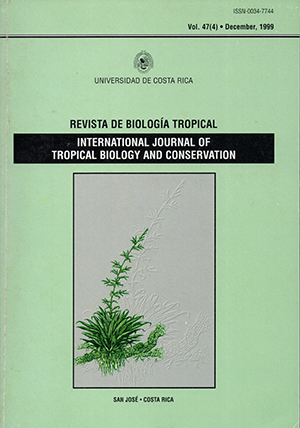Resumen
Para completar el diágnóstico de la calidad ambiental en el Parque Marino Nacional Isla Mujeres-Cancún-Nizuc Caribe mexicano, se estudió la posible utilidad de la criptofauna: de rocas como monitora de impacto. Se trazó un transecto a lo largo de un gradiente de intensidad de visitantes a Punta Nizuc. Se visitaron tres lugares (1.5-4 m proO, a 50, 250 Y 500 m de distancia de la plataforma turistica, y en cada uno de ellos se recogieron tres rocas. Los 1368 organismos encontrados fueron identificados y se distribuyen en 2 18 especies; los grupos de mayor riqueza específica fueron los poliquetos (64 spp), los moluscos (46 spp) y los crustáceos (36 spp). Se estudió la variación en número y en biomasa a lo largo del supuesto gradiente ambiental, y también la relación de algunos descriptores de la comunidad (diversidad, dominancia) con la distancia a la plataforma, con la densidad de la roca y con la profundidad. Se analizaron algunos índices que utilizan 10glO(biomasa + 1) y las curvas de abundancia-biomasa para determinar la calidad del ambiente. Se realizaron análisis de agrupamiento (Bray-Curtis y Jaccard) para determinar la afinidad entre estaciones. Para evaluar la funciorialidad de la suficiencia taxonómica en fondos coralinos, se compararon los resultados de dominancia de Berger-Parker para las especies y familias. Las agrupaciones entre las rocas ilustran dos grupos principales, uno formado por las rocas recolectadas cerca de la plataforma (zona perturbada) y la otra formada por el resto de las rocas en las áreas con mediano y nulo impacto.
##plugins.facebook.comentarios##

Esta obra está bajo una licencia internacional Creative Commons Atribución 4.0.
Derechos de autor 1999 Revista de Biología Tropical






